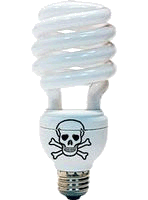One of the advantages of having the European “greenies”
and eco-whack jobs leading the way on so much of what passes for
environmentally friendly science is that the pitfalls of the many schemes come
to light before they get an opportunity to take root here. The Spanish
were nice enough to take the lead on the efficacy wind power and demonstrate
the lies made in the name of that form of “green energy”.
Of course, having the evidence is not the same thing as
taking the proper action based on that evidence. The eco-Nazis still have a
substantial grip around the neck of the American public and members of
Congress, especially on the Democrat side of the aisle. Only strong public
resistance and corrective action being taken at the ballot box can relax that
strangle-hold.
Facts are terrible things to try to deny. Our lap-dog
liberal media will do its best to hide the truth so we must be certain to
spread it to all that are willing to heed its warnings. Here are more facts:
German
scientists have been doing some in depth research into the gases and
chemicals released by CFL light bulbs during normal
operation.
Andreas Kirchner, of the
Federation of German Engineers, said: “Electrical smog develops around these
lamps. I, therefore, use them only very economically. They should not be used
in unventilated areas and definitely not in the proximity of the head.”
More importantly and more alarmingly there is a developing
body of evidence in this country that CFLs are far from being the
sparkling star the greenies would have you believe. The last several years have
seen many a household buy into the CFL myth of safe, efficient energy saving.
Now an ever growing body of evidence is accumulating about these devices.
Here is a heavily researched article, The CFL Fraud,
with numerous reference links which explores issues concerning how these bulbs
can spontaneously explode and cause a fire as well as spread the toxic mercury
from within the glass envelope. While much of this information was reported in
local news media where the incidents occurred, virtually none was picked up and
reported by national news organizations. Here are a few examples:
On February 23, 2011, TV
NewsChannel 5 in Tennessee covered "a newly-released investigators' report
that blames a February 12 fatal fire in Gallatin on one of those CFL
bulbs." Ben Rose, an attorney for the rehabilitative facility in
which Douglas Johnson, 45, perished, said, "This result is consistent with
our own private investigation. ...We have heard reports of similar fires being
initiated by CFLs across the country."
 "GE
Helical 13 Watt light bulb. After only 6 months of use. This bulb
started making funny noises and flickering... Finally, exploded on my kitchen
table." -- Charles of South Webster, OH January 30, 2010. "GE
Helical 13 Watt light bulb. After only 6 months of use. This bulb
started making funny noises and flickering... Finally, exploded on my kitchen
table." -- Charles of South Webster, OH January 30, 2010.
"My GE 20W Helical bulb
in my 1/2 bathroom caught on fire on 5/3/10. The bulb snapped and glowed
very brightly then caught on fire....The bulb was suppose to last 5 years but
it was only about a year or so old. I tried replacing it with a GE 26W
bulb and the same thing happened immediately." -- Chantelle of Danville,
PA May 15, 2010
"My 80 year old mother
turned on her reading lamp and the bulb exploded and the lamp shade caught
fire. She unplugged the lamp from the wall and the fire went out thank
God." -- M. of Lahaina, HI March 30, 2010
"We purchased a 3-way
light bulb this past year. [Special 3-way CFLs are made but cost more.]
Last night the bulb started a fire in the lamp....Had we not been there our
house might have burned down." -- Tina of Redding, CT July 10, 2010
October 5, 2010 the U.S.
Consumer Product Safety Commission reported: "Trisonic Compact Fluorescent
Light Bulbs Recalled Due to Fire Hazard" because of four incidents.
It's official notice states: "Hazard: light bulb can overheat and catch
fire."
Each of the above is provided with links to the original
source.
The mercury issue is covered as well. Did you know that
the state of Maine did a thorough study of the mercury concerns and issued a
160-page report on their findings? No. I thought not…
Concerns about the toxic mercury in CFLs are
downplayed by the bulbs' advocates, but they shouldn't be. According to
EPA and other sources, the safe limit is 300 nanograms per cubic meter.
When a broken CFL was reported in Maine, the state's Department of Environmental
Protection did the most extensive testing in the nation to evaluate the health
risk. Its 160-page report is shocking:
Mercury concentration in the
study room air often exceeds the...300 nanograms per cubic meter (ng/m3) for
some period of time, with short excursions over 25,000 ng/m3, sometimes over
50,000 ng/m3.
The Maine report states that although following its
recommended procedure for home cleanup produces visibly clean
flooring surfaces for both wood and carpets, all types of flooring surfaces
tested can retain mercury sources even when visibly clean. Flooring
surfaces, once visibly clean, can emit mercury immediately at the source that
can be greater than 50,000 ng/m3[.]
Oh, and there is much more.
The much ballyhooed savings in energy costs is also not quite
what is being promoted and these little buggers are not really a suitable
replacement for incandescent bulbs in a large number of applications. Cold
temperature start-up is a major problem. So aside from the potential fire
hazard, farmers would find them unusable in barns and other out buildings.
Homeowners cannot rely on them as outdoor security lighting. The list goes on
and on.
FTA:
CFLs also will not operate at
low temperatures, making them unsuitable for outdoor applications. Most
say so right on the packaging. Safety experts say outdoor lighting is one
of the most effective steps a person can take for home or business security,
and motion detector lights have grown increasingly popular. So
legislating incandescents out of existence will decrease safety. The same
will be true of the disappearance of timers, which many people use to turn
lights on and off when they are away, giving the appearance of someone being
home and thereby discouraging break-ins. And the cost of throwing out
timers and dimmers is not included in the costs of CFLs, nor is the cost of
buying the more expensive CFLs specially made for those purposes, when they are
available. The same is true for ceiling fans and garage door openers,
where ordinary CFLs cannot be used because of vibration, and special CFLs for
this purpose are far more expensive.
There are other issues explored in the article and all
are provided reference links. Everything from the damage done due to the
ultraviolet light emitted by the CFL bulbs to faulty calculations for reducing
the use of fossil fuels.
Read it all HERE and be
sure to pass this article around as I am certain most of this information will
be new news to most people.
Note: Some
formatting from the original newsletter may be lost in this reprint.
|

 "GE
Helical 13 Watt light bulb. After only 6 months of use. This bulb
started making funny noises and flickering... Finally, exploded on my kitchen
table." -- Charles of South Webster, OH January 30, 2010.
"GE
Helical 13 Watt light bulb. After only 6 months of use. This bulb
started making funny noises and flickering... Finally, exploded on my kitchen
table." -- Charles of South Webster, OH January 30, 2010.